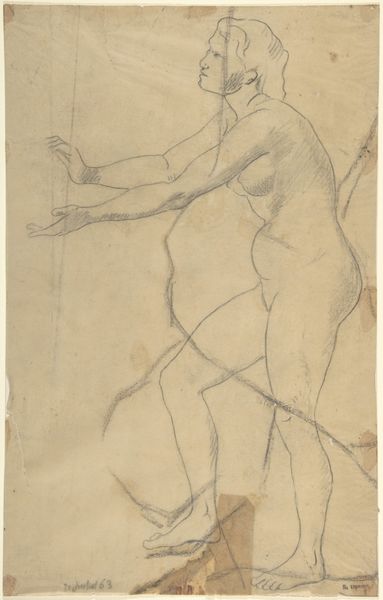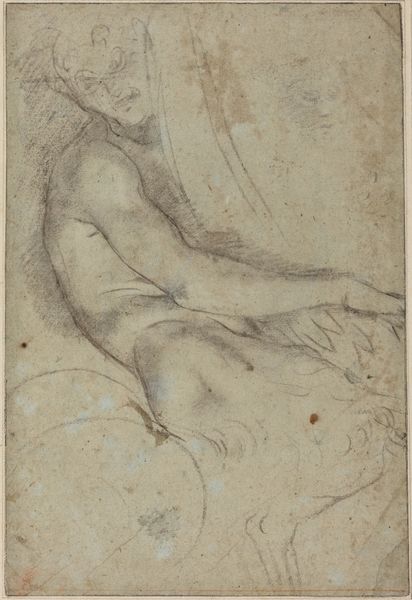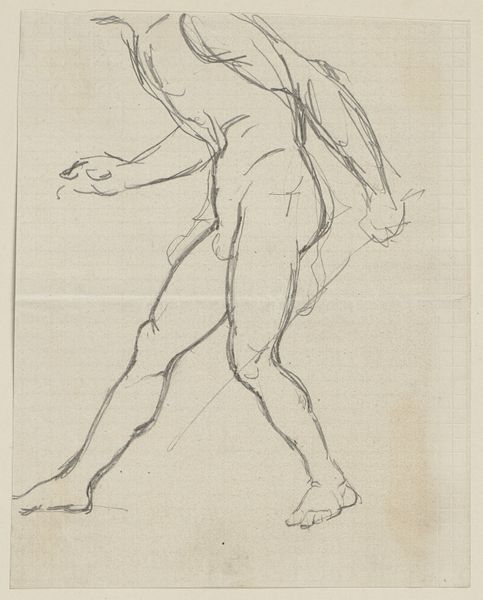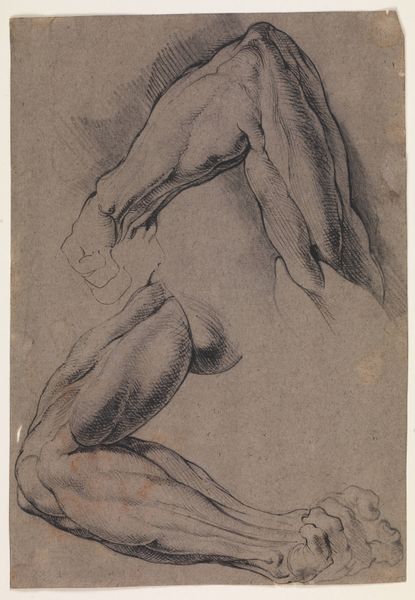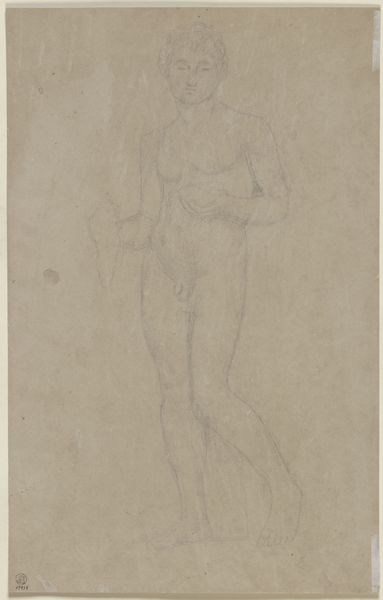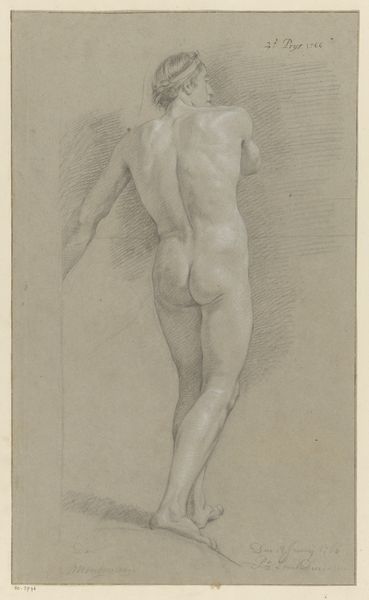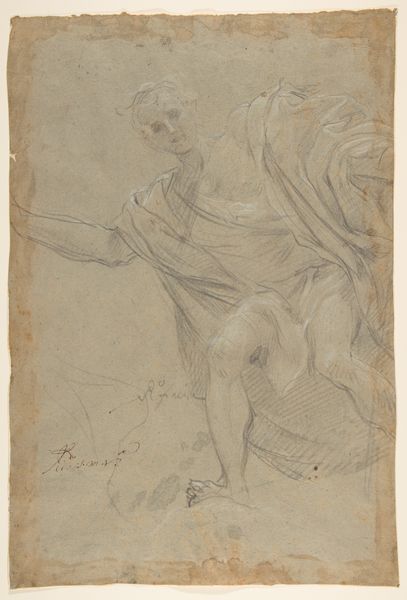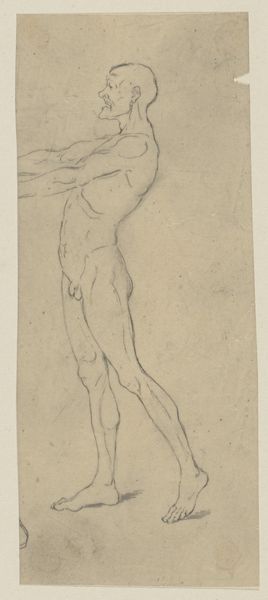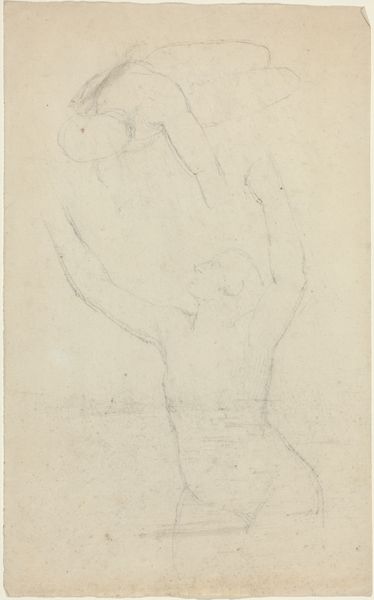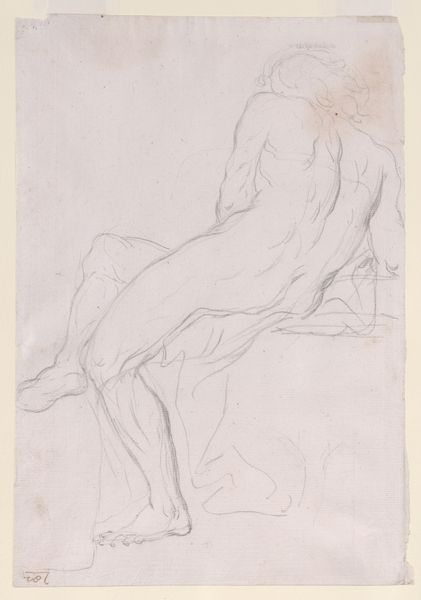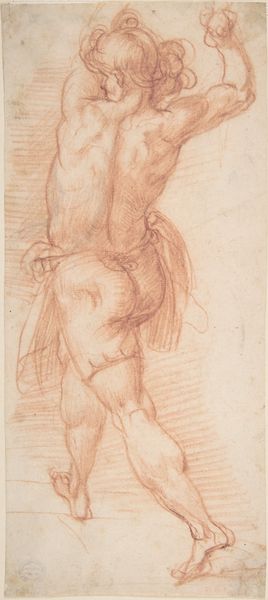
Nude Youth Running (recto); Standing Draped Old Man with Left Hand Upraised (verso) 1612 - 1650
0:00
0:00
drawing, paper, pencil
#
drawing
#
figuration
#
paper
#
pencil
#
academic-art
#
italian-renaissance
#
nude
Dimensions: 13 9/16 x 9 1/16in. (34.5 x 23cm)
Copyright: Public Domain
Editor: We’re looking at a drawing by Pietro Testa, made sometime between 1612 and 1650. It's rendered in pencil on paper and titled "Nude Youth Running." The figure seems caught in a fleeting moment, almost like a classical statue coming to life. What strikes you when you look at it? Curator: The pose immediately makes me think of figures like those in Pompeian frescoes. Notice how the forward thrust is nearly weightless, poised for flight rather than grounded motion. This drawing taps into a visual lexicon stretching back millennia, a kind of cultural memory of ideal forms and athletic prowess. What do you think such echoes accomplish? Editor: I guess it links the present – Testa’s time – with a glorified past. It feels a bit…aspirational? Curator: Precisely. The Renaissance, and especially its aftermath, was consumed with resurrecting classical ideals, but it also invested them with contemporary meanings. That tension - between faithful copying and creative interpretation – pulses throughout Testa's work. Look closely at the rendering of the muscles, the emphasis on contrapposto; those elements were laden with symbolism during the Renaissance. What emotions or ideas might the Renaissance eye have projected onto such a figure? Editor: Power, maybe? Grace? Definitely an idealized form of the human body. And because it's a nude youth, perhaps innocence, or a potential waiting to be unleashed. Curator: Exactly. The naked form serves as a blank slate, onto which we project a complex web of meanings rooted in classical history, mythology, and even philosophical concepts of virtue and beauty. Editor: It’s amazing to consider how a simple pencil sketch can carry so much cultural baggage. It makes me appreciate the layers beneath the surface of what appears to be just a study of the human figure. Curator: Indeed, and Testa's skilled draftsmanship underscores those associations, proving that even a sketch can participate in dialogues that span across generations. It demonstrates how images accrue significance and shape our understanding of history itself.
Comments
No comments
Be the first to comment and join the conversation on the ultimate creative platform.
